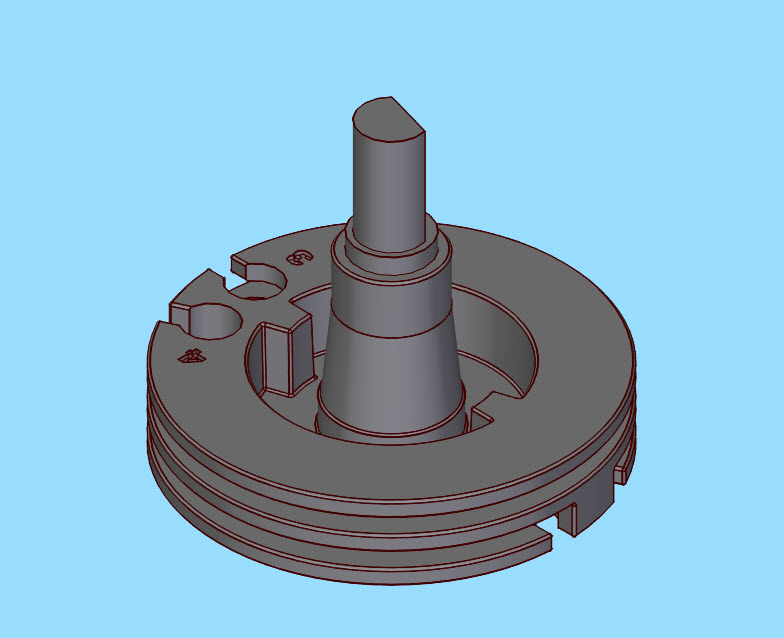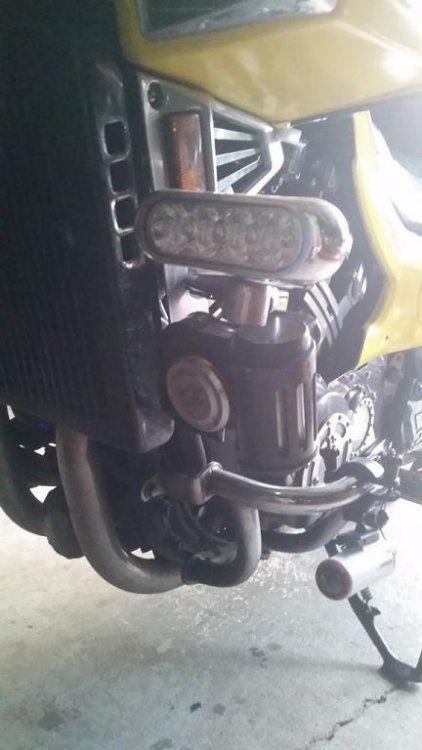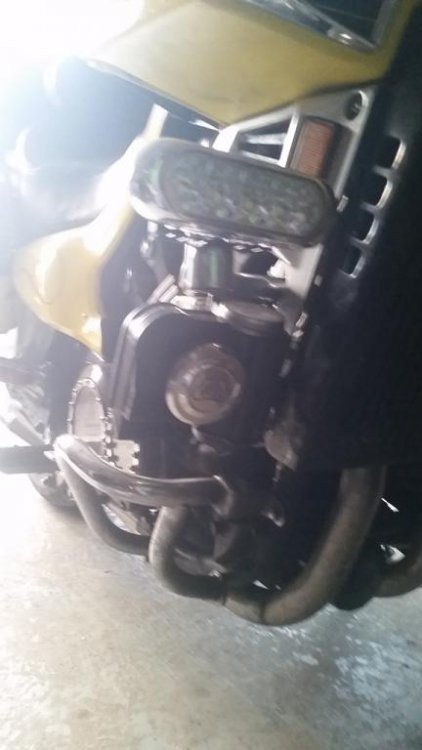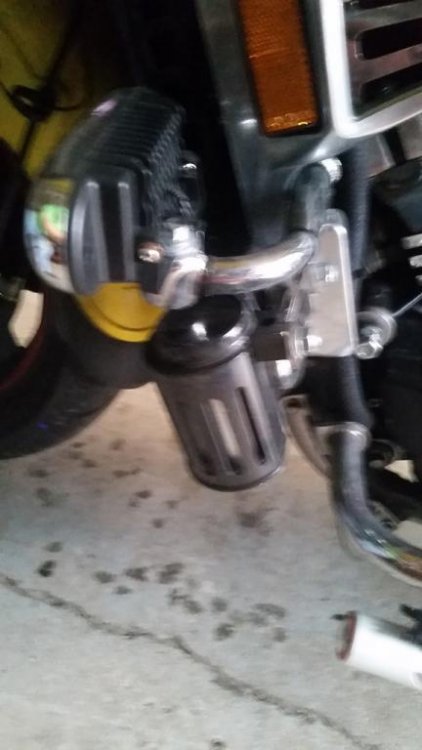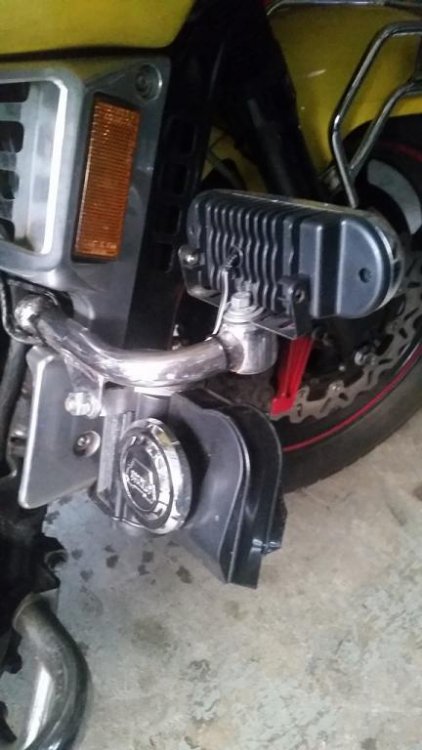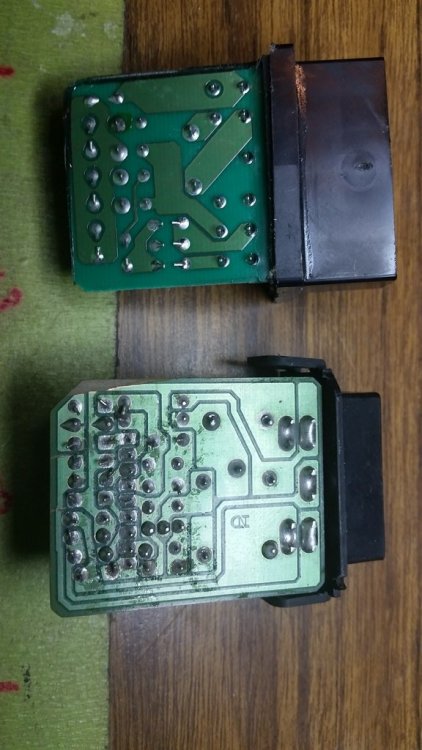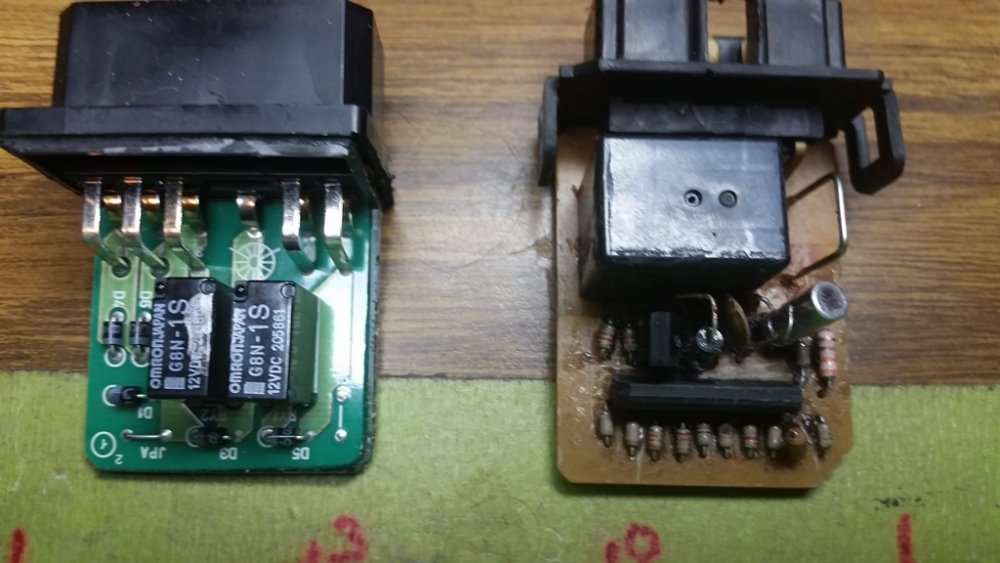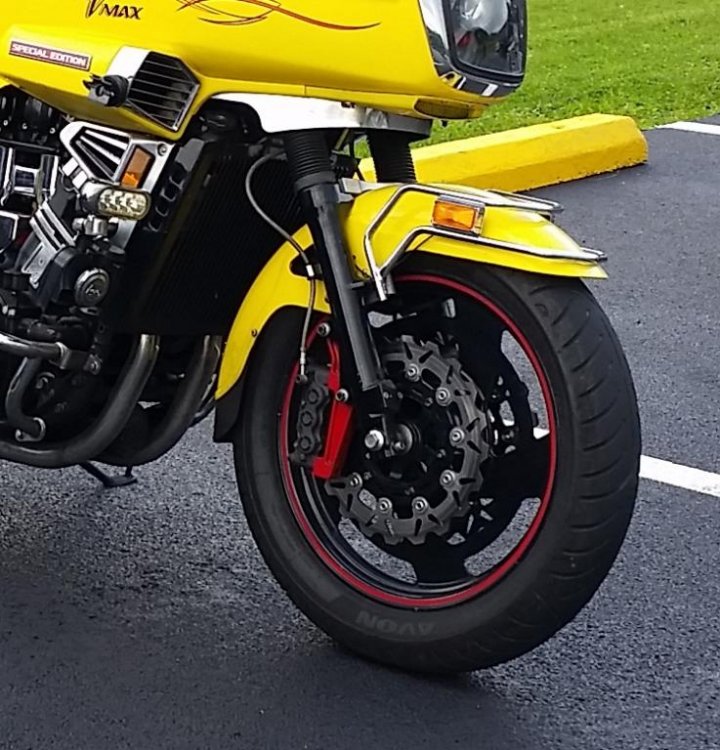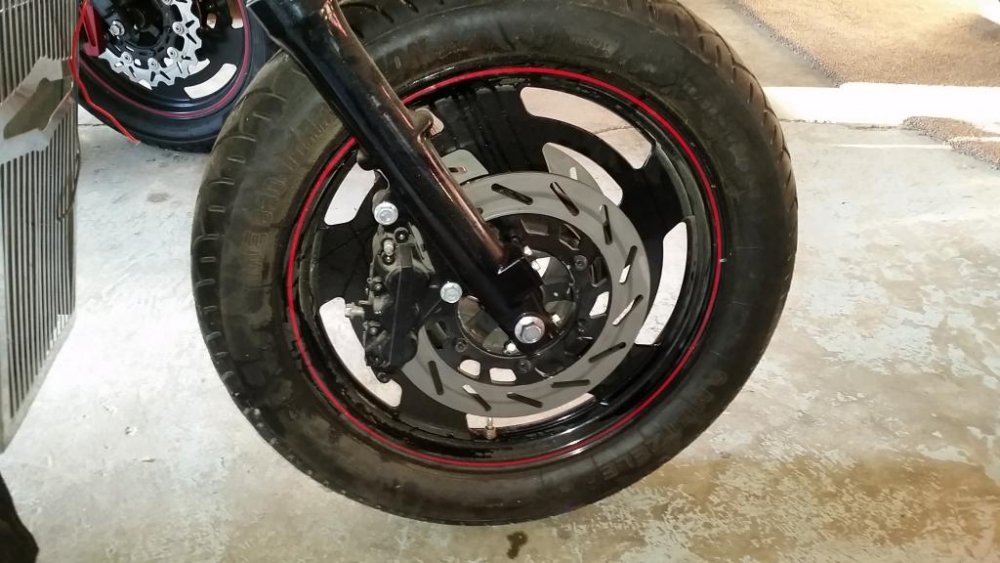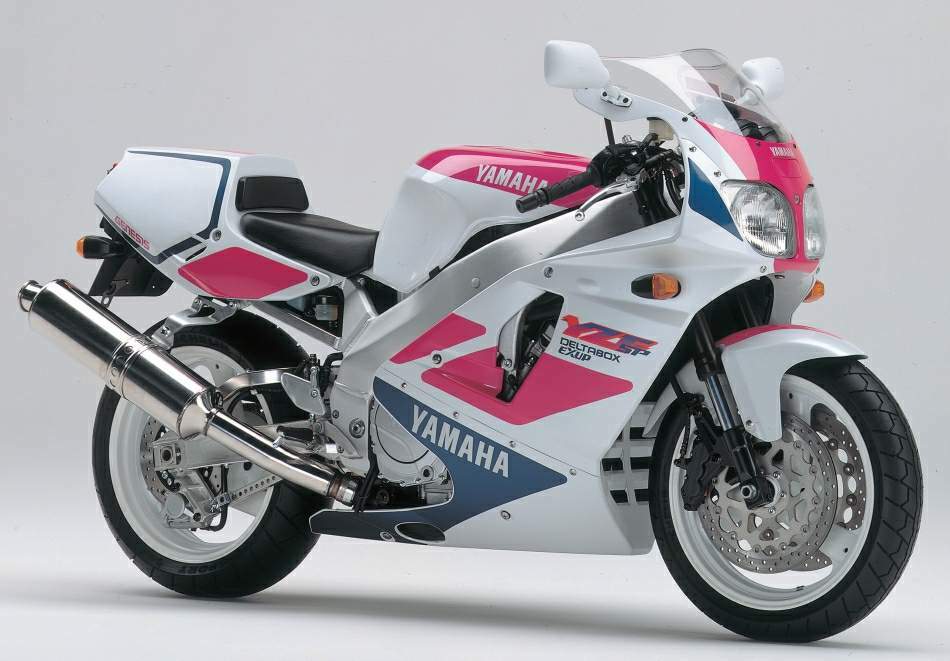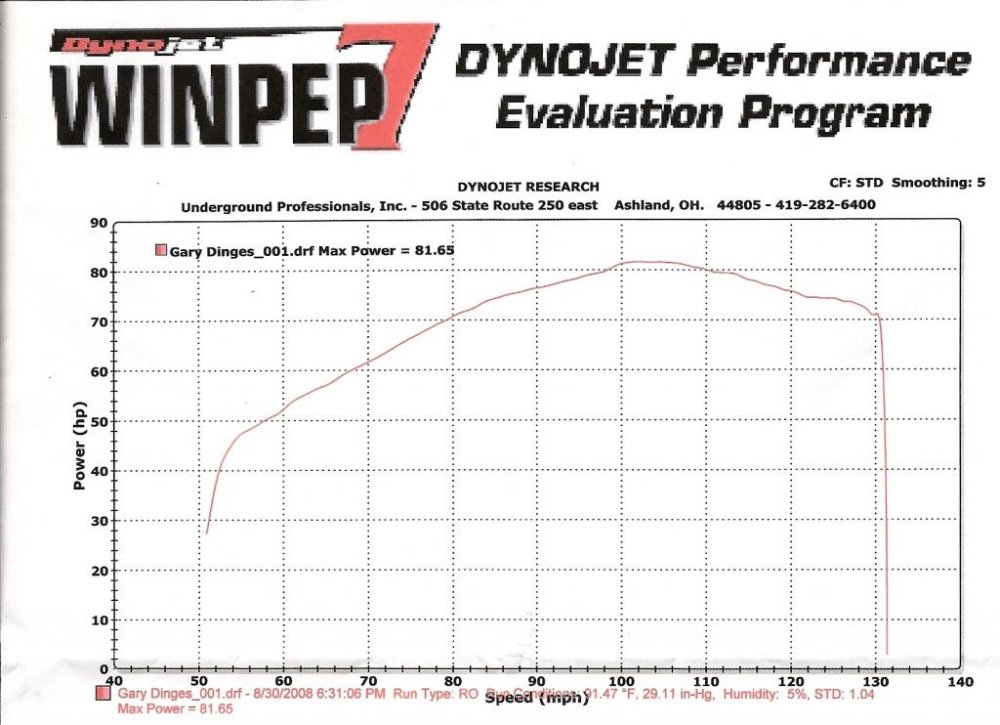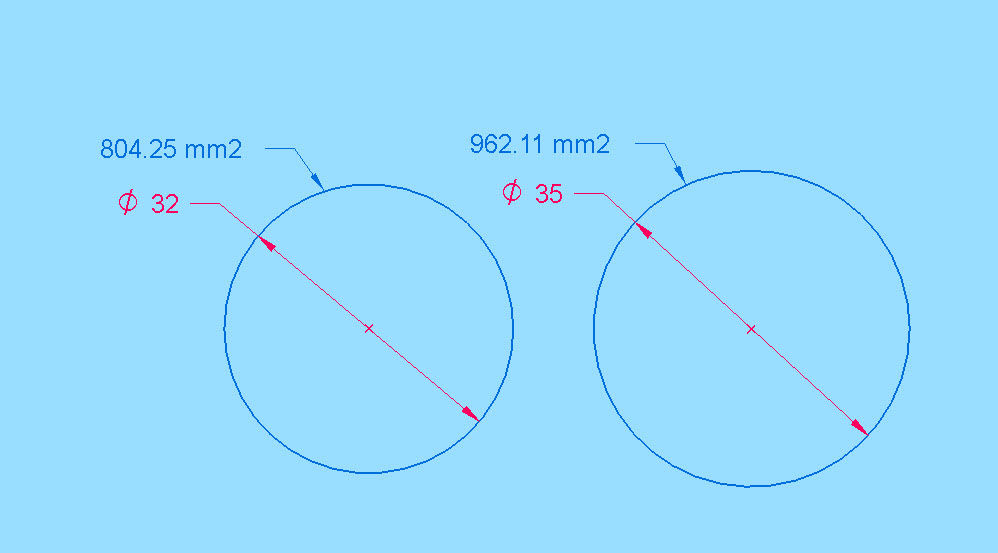-
Posts
5,403 -
Joined
-
Last visited
Content Type
Profiles
Forums
Gallery
Events
Store
Everything posted by dingy
-
Here are 2 short videos showing TP bar graph when running, 1st with canister buffer and 2nd without buffer. I have intentionally set TPS voltage high, so it would be in mid range of graph. All 4 carb ports are tied together. http://vid1007.photobucket.com/albums/af193/gdingy101/Ignitech%20with%20buffer_zpsytahkxym.mp4 http://vid1007.photobucket.com/albums/af193/gdingy101/Ignitech%20without%20buffer_zps5hbfrehv.mp4 Gary
-
A few pictures of a TPS sensor I have in bike now. I created a new wheel for the throttle cable junction box that is on cruise control equipped bikes 3D printed one out of a material similar to ABS.. Replaces the stock wheel that the throttle line engage. It has a shaft that protrudes through hole drilled in junction box housing. Then a somewhat standard TPS type controller (potentiometer) was mounted to outside of junction box. I DO NOT sell adapter wheel, but I would share the CAD file. I have removed stock radio & replaced with an aftermarket marine rated unit that doesn't have a CD player in it, so it is much shorter and gives me a lot of room in left fairing pocket. I did not see an distinct difference with TPS or Vacuum, I have connectors on both, so I can swap them out easily, along with a program change in TCI. I'm not saying there isn't a difference, I do not have a dyno run with the TPS & vacuum side by side to know. Gary
-
Some picture attached of what I did a few years ago to smooth pulsing out. 1 1/4 pvc with 2 caps and hose barbs JB welded in. Very short canister is better than long on, longer takes more time to smooth out pulsing. 5 way connector was from Auto Zone. Tie all 4 carbs into 5 way, 5 port goes to canister, then to MAP sensor. Gary
-

Mystery First Gen
dingy replied to MileHi's topic in Venture and Venture Royale Tech Talk ('83 - '93)
It makes no difference which carb sync port the vacuum hose is connected to. I would suggest you remove the air cleaner cover, start motor and rev it some and see if slides are all moving freely. You can see them with cover removed. If not, pull side covers off carbs & check rubbers for pin holes. Gary -

Gear shift indicator
dingy replied to taz112's topic in Venture and Venture Royale Tech Talk ('83 - '93)
I would tend to think that the diode pack has an issue. Located behind the headlight. (I think) What Praieiehammer indicated would not explain why it works side stand down. Link to wiring diagrams. http://www.venturerider.org/forum/showthread.php?42384-1st-Gen-Wiring-Schematics-1983-1993 Gary -

Two Bad Boy Horns from Harbor Freight--Increased safety
dingy replied to lanster's topic in Watering Hole
Pictures show a pair of air horns and fog lights mounted on an aftermarket bracket. Markland made them I think. Left one needed an extender to mount horn, needed about 2" shift outboard to mount air horns. I used straps that stock horns use to make it. Not very good pictures, last one shows bracket the best. Gary -

re-wire emergency flashers to battery
dingy replied to videoarizona's topic in Royal Star Venture Tech Talk ('99 - '13)
Somewhat related. I have dissected the two main flasher relays that I had no schematic info on from an RSV. I will get schematics drawn for these two relays, which will help to understand the hazard circuitry. One of them was encased in very tough rubber, which was a PIA getting off. Gary -
The Yamaha Service Manual has a simplified version of the schematic in it, PDF attached. The full version is better if tracing a circuit route through harness is needed. The simplified is easier if just understanding circuit is what is needed. All of the Schematics I redrew are located in thread below. http://www.venturerider.org/forum/showthread.php?42384-1st-Gen-Wiring-Schematics-1983-1993 Gary 1983-1985 Yamaha Venture Manual Wiring Simplifiedl.pdf
-
Yellow bike has 2011 R1 six pot calipers with 4 pads per caliper. Same brakes are on 2nd Gen VMax. 300 mm rotors. These are actually a little to much brakes. Forks are from an 86 or 87 Venture. These calipers required a custom bracket, due to 1 piece caliper design somewhat. 2nd picture is of six pot calipers that will mount directly to an 86-93 Venture set of forks. Came from a Yamaha YZF 750, early 90's. 298mm stock Venture rotors. No adapter needed. 3rd picture is similar bike these came off. I believe that the rotors may also need to be changed, depending on what the donor bike used. 83-85 Ventures have 282mm rotors, 86-93 Ventures have 298mm rotors. If a 282 is used and donor bike was 298, 5/8" on the rotor outside diameter won't be touched by pads. Gary
-

Adjusting 2nd Gen head bearing nut while torn down
dingy replied to YamahaLarry's topic in Watering Hole
Shameless plug. http://www.venturerider.org/forum/photopost/showproduct.php?product=385&title=yamaha-steering-head-adjustment-wrench&cat=20 Gary -
That is correct. I think 1N4001 is the recommended as it has lowest voltage rating of series. Any of the others will work just as well. If your diodes have failed, TCI may be beyond repair though. Gary
-

41R TCI Compatibility Question
dingy replied to Vonwolf's topic in Venture and Venture Royale Tech Talk ('83 - '93)
Any of the 41R TCI's will interchange. Something internally caused Yamaha to bump the revision level. Not necessarily performance related. Could have been component change on board for some reason. Here is link to one I sell in classifieds here. It will work, brand new modern electronics, fully epoxy encapsulated. http://www.venturerider.org/forum/photopost/showproduct.php?product=396&title=ignitech-ignition-control-module-for-1983-1993-venture-27s&cat=20 Gary -

faulty pressure sensor
dingy replied to garyS-NJ's topic in Venture and Venture Royale Tech Talk ('83 - '93)
Yes I do. I have some available now. http://www.venturerider.org/forum/photopost/showproduct.php?product=396&title=ignitech-ignition-control-module-for-1983-1993-venture-27s&cat=20 Gary -

faulty pressure sensor
dingy replied to garyS-NJ's topic in Venture and Venture Royale Tech Talk ('83 - '93)
If the tach is dropping out, you at a minimum have electrical and/or TCI issues. Tach runs off #2 coil circuit. Tach dropout indicates this cylinders coil is firing intermittently. Gary -

26H/41R "swappable"?
dingy replied to Great White's topic in Venture and Venture Royale Tech Talk ('83 - '93)
83-85 is single wire connection, 86-93 is two wire connection to fan relay. Not thermostat itself, but a sensor in coolant junction block, bad description on my part. Gary -

26H/41R "swappable"?
dingy replied to Great White's topic in Venture and Venture Royale Tech Talk ('83 - '93)
Been there done that. You will need all 3 brake/clutch switches, clutch & throttle hand controls switches, CMU unit, thermostat unit. All that I can think of. Guessing you might be wanting to add cruise control, that's what I did it for. Gary -
The 98 hp rating for the RSV's is bogus. It is first off crankshaft HP. This means it is setting on a test stand with nothing attached to motor that would drain horse power. No water pump, stator, clutch etc. The 1986-1993 1300 1st gens were rated at 97 hp, again crankshaft reading. The general consensus here is that a 1st gen will outperform a 2nd gen in acceleration and high speed, hands down. This is supported by the facts of differences in construction. The 86-93 had 35mm carbs and the RSV's had 32 mm carbs. That translates to the RSV's having only 83% area in each carb. Picture attached showing CAD drawing of venturi throat and size difference. Less air/fuel in, less horse power out in similar motors. The motors are essentially the same with one other glaring difference. The RSV's had 4 into 4 exhaust system, which in general will drop HP another 10%.. Maybe not as much as 10% difference from the 86-93's since they tied into a common collector, but still not a HP advantage. Picture attached of dyno HP reading only, no torque or AF readings, on a 1200 Venture (Early Tweety), pure stock other than K&N filter. It hit 81.65 rear wheel HP, this is 8 hp below the advertised HP of 89. Almost all manufacturers show advertise crankshaft HP, it is not real world. Yamaha couldn't bring out the new & improved RSV in 1999 and advertize a lower HP than its predecessor, not a good marketing strategy. Gary
-

V-Max Cam timing
dingy replied to KSRIDER10's topic in Royal Star and Royal Star Tour Deluxe Tech Talk
As far as I know cam gears are the same. I think they are marked intake & exhaust. I would not use Venture springs though. The VMax springs are heavier return rate, thus allowing higher reving of motor. Prior to putting VMax heads on Tweety, valves would float around 8300 rpm. It can do 10,000 now, primarily due to better valve springs. Gary -

V-Max Cam timing
dingy replied to KSRIDER10's topic in Royal Star and Royal Star Tour Deluxe Tech Talk
PDF attached. Gary VMX12- Service-Manual Cam install.pdf -

26H/41R "swappable"?
dingy replied to Great White's topic in Venture and Venture Royale Tech Talk ('83 - '93)
You can use a 1984~1989 TCI on a 1983 bike by moving the vacuum line from the #2 carb to the plugged #2 intake & plugging port on #2 carb. AutoZone sells cap that is needed. It is not easy to move a 1983 to 1984~1989 bikes as the port is not on the 1984~1989 carbs that is needed. The 1983 TCI MUST have the vacuum source originate from above the throttle plates. The 1984~1993 TCI MUST have the vacuum source originate from below the throttle plates. 1990~1993 TCIs will not work on any other bikes without rotor, pickup coils and harness changes. Gary -
Didn't see that one coming. Possible, but I have never seen a dyno run sheet for a stock RSV. Gary
-

Carb mechanic
dingy replied to BigClayton's topic in Venture and Venture Royale Tech Talk ('83 - '93)
As much as I would like to sell you a TCI, you have carb issues at this point. With the motor cold, check and see if exhaust tubes heat up evenly, best way is with an infrared temp gun. Harbor Freight sells them in $20~30 range. If you have a cold cylinder, it might be TCI. A bad sync won't prevent a cylinder from firing and heating up. I don't think that just a bad sync will have as drastic effect as you describe though. Something else to try is called a Shotgun treatment to the carbs. I just did this for the 1st time to my 83 (Tweety) due to a nasty backfire on one cylinder in mid range on deacel. It eliminated that. It helps clean out many of the carb circuits without removing carbs. PDF attached of procedure. Link to author's web site is next, though PDF has complete description & pictures that he posted. http://vmax.lvlhead.com/tips/shotgun.htm Gary Lvlhead's Vmax - The Shotgun.pdf



